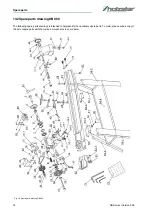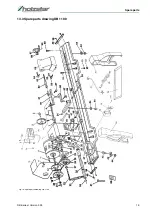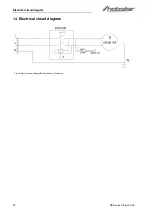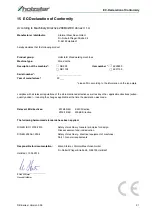
16
DB-Series | Version 3.09
Disposal, reusing used machines
12 Disposal, reusing used ma-
chines
In your own interest and to protect the environment make
sure that all machine components are exclusively dis-
posed of in as intended and permitted.
12.1Decommissioning
Disused machines must be decommissioned immedi-
ately to prevent misuse at a later point and putting the
environment or persons at risk.
Step 1: Remove all environmentally hazardous process-
ing materials from the used machine.
Step 2: If necessary, disassemble the machine into as-
semblies and components that are easy to han-
dle and suitable for recycling.
Step 3: The machine components and processing mate-
rials must be disposed of using the intended dis-
posal methods.
12.2Disposal of electrical equipment
Note that electrical equipment contains a variety of recy-
cling-capable materials and also environmentally haz-
ardous components.
Please help to separate these components and dispose
of them responsibly. In case of doubt, contact your local
waste disposal authority. Consult a specialist disposal
agent for recycling if needed.
12.3Disposing of lubricants
Lubricant manufacturers provide disposal information for
the lubricants used. If necessary, request product-spe-
cific data sheets.
Strong vibrations.
Workpiece deformed, un-
round, has large weak points/
cracks or has not been prepa-
red for turning.
Prepare the workpiece for turning by planing and sawing.
Spindle bearing is worn.
Replace the spindle bearing.
Belt is worn.
Replace the belt
Motor mounting or handle are
loose.
Tighten screws and handle.
The lathe stands on an une-
ven surface.
Place the lathe on a flat surface and align it.
The workpiece sur-
face is too rough.
The turning iron is out of fo-
cus.
Resharpen the turning iron.
Turning iron spring
Clamp the lathe tool shorter.
Motor overheats and
has no power
Motor overloaded.
Reduce feed.
Mains voltage is too low
Switch off and have it checked by a specialist.
Motor is connected incor-
rectly.
Have it checked by a specialist.
Insufficient working
accuracy
Uneven, heavy or clamped
workpiece.
Clamp workpiece mass-balanced and tension-free.
Incorrect horizontal position
of the tool rest.
Adjust the tool rest.
Fault
Possible cause
Solution







































